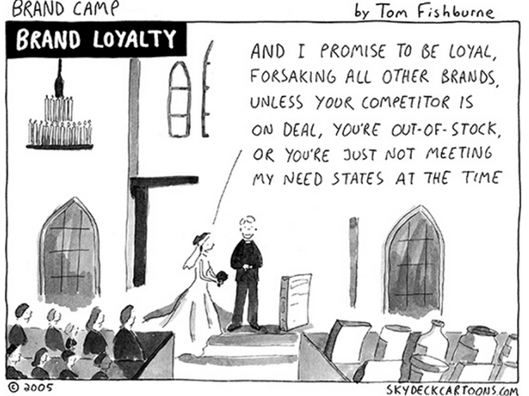
Most companies, large and small, monitor satisfaction scores given by their customers. Regardless of the methodology or scale they employ, the utility of these measurements is somewhat questionable. Aggregate metrics like these offer very little actionable intelligence, but trending them over time may provide alarms, acting as the proverbial canary in the mine.
Presumably, companies that compete in the market have to satisfy their customers to stay in business. Therefore, relatively high customer satisfaction scores signal the likelihood of the company’s longevity. Many hypothesize that high customer satisfaction leads to the creation of loyal customers, low customer churn, and subsequently high profit margins with increase in market share. While the correlations between increases in customer experience scores and wealth creation are relatively well documented, the cause and effect between the two are very hard to establish. There are many gaps in the logic of such inferences:
- Relativity of the score – most companies measure customer satisfaction of their customers without benchmarking these scores against the competition. Such an approach provides no more than a data point without reference to the realities of the marketplace.
- Satisfied customers do not automatically become loyal customers. Customer satisfaction is an absolutely necessary condition for forging customer loyalty, but it is not a sufficient one. Loyal is the customer who will continue to buy from your company regardless of the market pressures:
– even if the product or service can be purchased cheaper from someone else
– even if your competitor comes with a “better” product
– even if the delivery comes a day later than competition.
Rudy Vidal of Vidal Consulting Group shared with me the results of his research on the correlation between customer satisfaction and loyalty – only 13% of “extremely satisfied” customers identify themselves as being “loyal” as described in the definition above.
Make no mistake, raising your customer satisfaction scores above the scores of your competitors will likely have a positive impact on reducing your customer churn rates. The challenge is to produce “real” quantified evidence of such impact. It may be substantially easier to produce evidence of how loyalty (not declared intent, but observed behavior) impacts profitability and/or revenue growth. The methods for doing this have to be discussed in the context of specific product or company. The more relevant question for this post is – what turns satisfied customers into the loyal ones?
Many subject matter experts seem to think that loyalty is created by an emotional response of customers to certain elements or attributes of their experience with a product, brand or company. Moreover, the loyalty is only forged when the customer exposed to such experience on multiple occasions.
Most “loyalty” programs on the market today completely miss this point and act as “golden handcuffs” to incite repeat business rather than creating loyal customers. All the talk about “awing” or “delighting” customers is unlikely to produce any specific, measurable and lasting effect in creating customer loyalty. Without understanding what customers value on emotional level these programs will likely fail.
The ultimate challenge for a practitioner is to recognize which elements/attributes of their customers’ experience inspire emotional responses and optimize the processes to deliver them consistently.
This article was syndicated from Business 2 Community: Customer Satisfaction Is Not Enough to Forge Loyalty
More Sales & Marketing articles from Business 2 Community:




